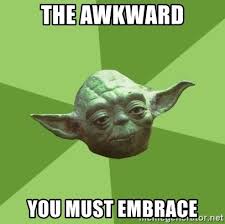For our first meeting of the semester, we got to hear from newly-minted Mentorship Co-Chair Katy May about her science communication work for the Center for Human Health and the Environment. As is tradition though, this was preceded by a science communication icebreaker activity. For this activity, we split up into two groups: one group being scientists, the other being science communicators. In this role-playing game, the science communicators practiced interviewing the scientists about their work (in this case, the research they are involved in here at NC State). But there was a catch! Each science communicator was assigned a specific role to play. These varied from “The Silent One,” a science communicator that asked very few questions and instead tried to encourage the scientist to keep talking by having positive and encouraging body language, to “The Overtalker,” a science communicator that repeatedly talks over their interviewee and doesn’t let them finish their thoughts. Other science communicator roles included “The Shy One,” who only asked questions while staring at the floor and “The Empath,” who only asked emotion-laden, touchy-feely questions.
This activity had a number of purposes. First, it got all the participants a bit more used to being in the awkward interpersonal situations that often go along with being a science communicator, particularly in the interviewing context. Embracing that awkwardness can be key to getting a good quote or encouraging meaningful responses. For example, sometimes a science communicator will find themselves interviewing someone who is not very forthcoming. In these situations, one journalistic exercise to draw on is that employed by “The Silent One” in our game. By letting a too-succinct answer just sit in the air, a tactful science communicator can encourage a quiet interviewee to expand on their answer, which might give the science communicator a better quote or more in-depth information about what they are reporting on. Few people are comfortable stewing in silence in an interview context, so most scientists will fill this space with their own voice if the interviewer seems to be expecting more from them.
Another example of embracing awkwardness comes from “The Empath.” In an interview with a scientist, it can be easy to focus too much on the nuts and bolts of the science that was conducted and neglect the more relatable human sides of a story. Focusing more closely on how a certain discovery or research result felt can feel a bit strange to bring up, but it often leads to a much richer interview that can give you a better quote.
This activity also taught science communicators to learn what to avoid when interviewing. Body language makes a big difference in an interview, and participants in this activity learned why eschewing the techniques used by “The Shy One,” is so important. And on the flip side of the coin, coming across as hyper-engaged in the conversation such that you’re not giving the interviewee space to respond fully can cut short what might have otherwise turned into a good quote.

After the game, we got to hear from Katy May about how she balances her science communication work with her schoolwork. Katy May, who is Co-Chair of the SSS Mentorship Committee, works full-time for the Center for Human Health and the Environment as the Director of Community Outreach and Engagement. In this role, she is responsible for translating the Center’s scientific knowledge into language and practice that is engaging and relevant to the community. This work takes a variety of science communication skills and one particularly unique aspect of the job is an outreach event where scientists from the Center sit down with community members at a bar to chat about the research they do and its relevance and importance. Katy helps train these scientists to better engage with the community and to translate their research into something relatable. On top of all this work, Katy is also a part-time PhD student at NC State studying Science Education. Katy talked with the group at length about how she balances these responsibilities, the exciting life of a joint science communicator-PhD student, and how she hopes to use these experiences going forward. It was a great talk! Thanks to Katy for leading this week’s meeting. Next week: effective science poster design!
